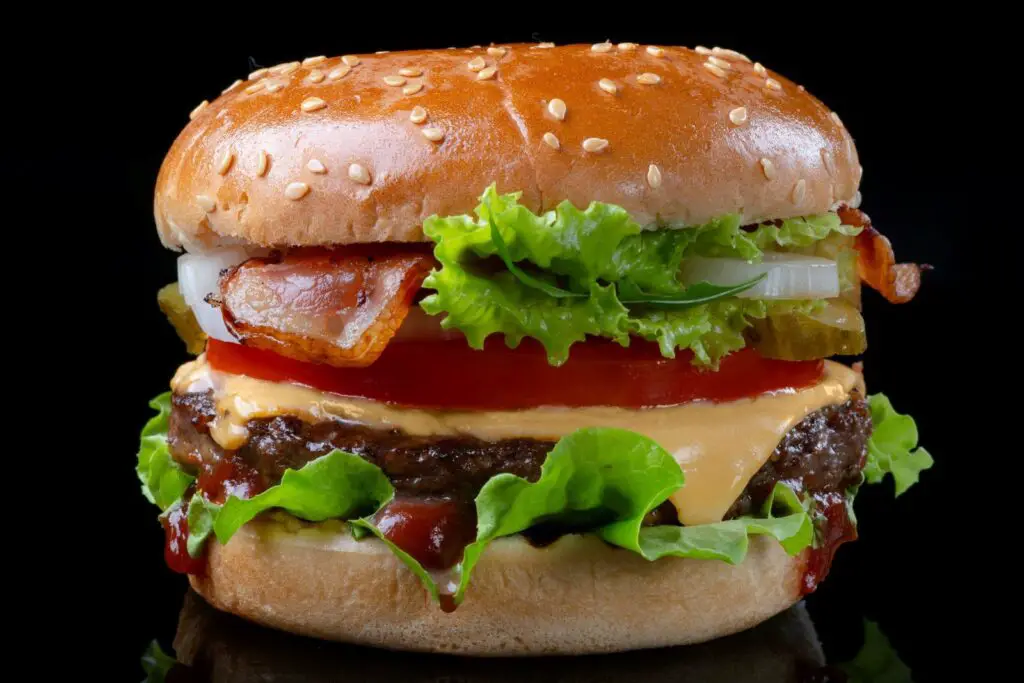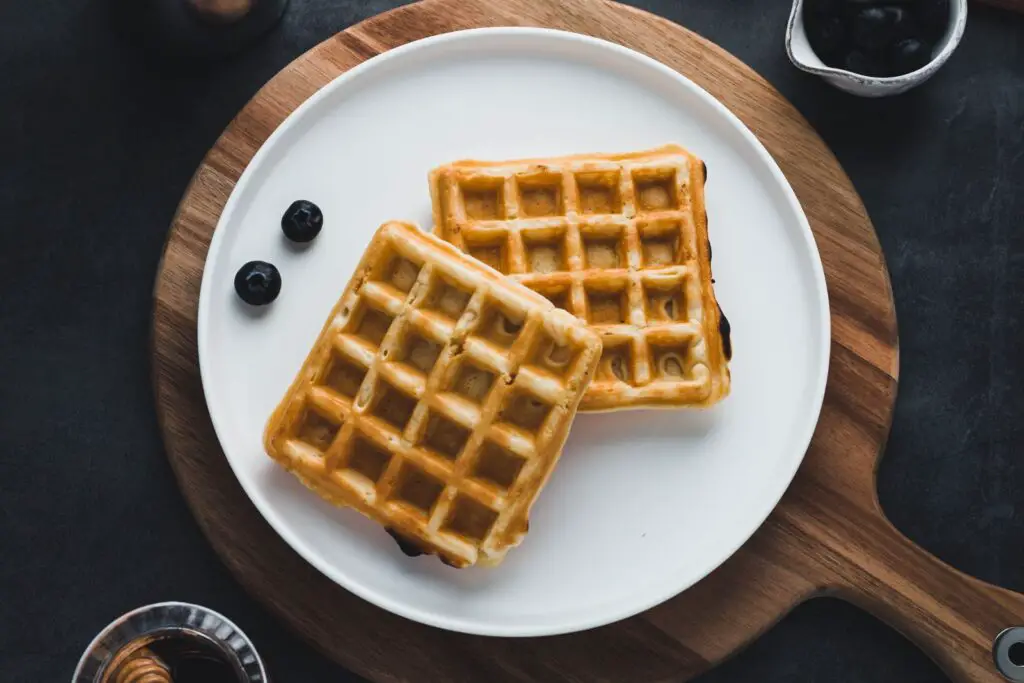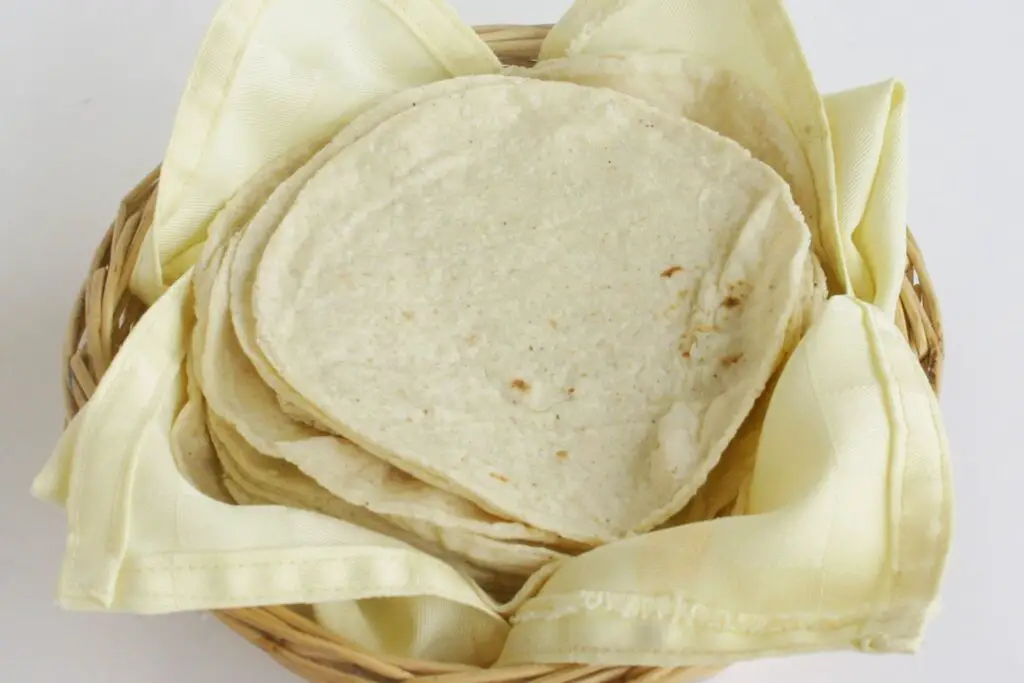
Rolls are a popular type of baked bread product that come in various shapes and sizes. They are commonly served as a side dish or used as a base for sandwiches. Whether you’ve made a large batch of rolls at home or bought them fresh from a bakery, freezing rolls can be a convenient way to preserve their deliciousness for later consumption. Freezing rolls properly can help maintain their taste, texture, and quality. This article presents a step-by-step guide on how to freeze rolls while ensuring they remain just as delectable as when they were first baked.
Let’s delve into the process of freezing rolls:
Step 1: Choose the Right Rolls
When it comes to freezing rolls, the first crucial step is selecting the right rolls for the task. The quality of the rolls you choose at this stage can significantly impact their taste and texture after they have been frozen and thawed. Whether you’re dealing with plain dinner rolls, sweet rolls, or specialty rolls, here’s why it’s essential to ensure they are fresh and in their prime condition:
- Preserving Flavor: Rolls that are freshly baked and at their best flavor will retain more of their delicious taste when frozen. The freezing process can slightly dull the flavors, so starting with flavorful rolls is key to enjoying them later.
- Texture Matters: The texture of rolls can change when frozen. If you start with rolls that are already soft and fluffy, they are more likely to maintain their desirable texture once they are thawed.
- Avoiding Staleness: If the rolls you choose are already slightly stale or overbaked, freezing might not improve their texture. Freezing can’t reverse the effects of staleness, so selecting rolls that are still moist and tender is essential.
- Variety Considerations: Different types of rolls may have different characteristics that affect how well they freeze. Sweet rolls with fillings or glazes might require some extra attention during freezing to prevent the toppings from becoming soggy or runny.
Step 2: Prepare the Rolls
As you embark on the journey of freezing rolls, the preparation stage holds significant importance in maintaining the quality of your rolls throughout the freezing and thawing process. If your rolls come adorned with enticing toppings such as seeds or glazes, it’s prudent to give them a little extra attention before freezing. Here’s why taking the time to prepare your rolls properly can make a difference in the final results:
- Avoiding Texture Compromises: Toppings like seeds or glazes can add delightful textures to your rolls, but they may not withstand the freezing and thawing process as well as the rolls themselves. Moisture from the toppings can cause them to become soggy or lose their crunch, potentially detracting from the overall eating experience.
- Minimizing Moisture Migration: Moisture tends to migrate within the frozen rolls, and this can affect the integrity of the toppings. During thawing, the moisture can cause the toppings to become unevenly distributed or lead to unwanted sogginess.
- Preventing Sticky Situations: Some toppings have the tendency to stick to plastic wrap or aluminum foil, making it difficult to unwrap the rolls without damaging the appearance of the toppings. By removing these toppings before freezing, you ensure that your rolls remain visually appealing and appetizing.
- Maintaining Visual Appeal: When you eventually serve your frozen rolls, you’d want them to look just as inviting as they did when they were freshly baked. Removing the toppings before freezing can help preserve the visual appeal of your rolls.
To execute this step, gently brush off or remove any toppings that might be prone to issues during freezing and thawing. This small but impactful measure can go a long way in ensuring that your rolls retain their delectable textures and flavors, providing you with a delightful treat every time you enjoy them. By preparing your rolls thoughtfully, you’re setting the stage for a successful freezing process and future culinary satisfaction.
Can I freeze rolls with fillings or toppings?
Yes, rolls with fillings or toppings can be frozen. However, it’s advisable to remove delicate or moisture-sensitive toppings to prevent texture changes or sogginess. Proper wrapping and storage help maintain quality during freezing.
Should I let the rolls cool before freezing?
Yes, allowing rolls to cool to room temperature before freezing is recommended. This prevents condensation within the packaging, reducing the risk of freezer burn and maintaining optimal texture and quality during storage.
Step 3: Arrange the Rolls
As you progress further into the process of freezing rolls, the arrangement of your rolls before freezing plays a pivotal role in preserving their individuality and preventing unwelcome sticking. Placing the rolls on a baking sheet or tray in a single layer might seem like a simple step, but its significance cannot be overstated. Here’s why the initial arrangement of the rolls matters:
- Preventing Sticking: When rolls are placed in close proximity during freezing, there’s a chance they might stick together. This can lead to difficulty in separating the rolls, potentially causing them to tear or lose their shape.
- Maintaining Individual Shapes: Rolls come in a variety of shapes and sizes, each contributing to their visual appeal. Arranging the rolls in a single layer ensures that they maintain their distinct shapes during freezing. This is particularly important for rolls with intricate designs or patterns.
- Even Freezing: Adequate space between the rolls allows for proper airflow during the freezing process. This results in more consistent freezing, which can contribute to better texture and quality when the rolls are thawed.
- Easy Portioning: If you intend to thaw and consume only a portion of the frozen rolls, arranging them individually on a baking sheet makes it easier to separate the desired number of rolls without thawing the entire batch.
- Reducing Breakage: When rolls stick together, attempts to separate them could lead to breakage. Arranging the rolls in a single layer minimizes the risk of damaging the rolls during the freezing and thawing process.
To arrange the rolls, place them on a baking sheet or tray, ensuring they have enough space between them. This prevents them from touching and sticking together as they freeze. By giving each roll its own space, you’re setting the stage for a hassle-free freezing experience and ensuring that your rolls remain in their best possible condition until you’re ready to enjoy them.
Step 4: Pre-Freeze the Rolls
As you continue on your journey to freeze rolls effectively, the concept of pre-freezing might intrigue you. This intermediary step between preparing the rolls and fully freezing them might seem like an added effort, but its purpose holds significant benefits for the texture and appearance of your frozen rolls. Here’s why giving your rolls a brief pre-freezing period is a noteworthy step:
- Preserving Shape: Rolls have a distinct shape that adds to their visual appeal. During the initial stages of freezing, the moisture within the rolls begins to solidify. Without pre-freezing, this solidification process could lead to slight changes in shape, causing the rolls to become misshapen over time.
- Enhancing Individuality: Each roll is a work of culinary art in its own right, and pre-freezing helps maintain their individuality. This is especially important for rolls with intricate details, as they retain their unique characteristics during the pre-freezing phase.
- Minimizing Stickiness: The pre-freezing step allows a thin layer of ice to form on the surface of the rolls. This layer acts as a protective barrier, reducing the risk of rolls sticking to each other or to the wrapping materials.
- Improving Freezing Efficiency: By allowing the rolls to pre-freeze for a short period, you’re essentially jumpstarting the freezing process. This can result in a more efficient and uniform freeze throughout the entire roll, contributing to better texture when thawed.
- Managing Moisture: Pre-freezing helps manage the moisture within the rolls. A gradual freezing process can prevent the formation of large ice crystals, which could potentially affect the overall texture of the rolls.
To execute this step, arrange the rolls on a baking sheet or tray and place them in the freezer for about an hour. This brief period of pre-freezing sets the stage for a more successful freezing process and ensures that your rolls maintain their distinct shapes and characteristics. With this extra attention to detail, you’re taking a step closer to enjoying perfectly preserved rolls even after they’ve been frozen and thawed.
Step 5: Wrap the Rolls
As you delve deeper into the process of freezing rolls, the act of wrapping each roll individually might strike you as a meticulous endeavor. However, this step plays a crucial role in safeguarding the quality and taste of your rolls during their frozen slumber. Individually wrapping each roll with materials like plastic wrap or aluminum foil, and optionally placing them inside a resealable plastic bag, offers a range of benefits that are well worth the effort. Here’s why taking the time to wrap your rolls meticulously is a noteworthy practice:
- Barrier Against Freezer Burn: Freezer burn is a common concern when freezing food. It occurs when moisture within the food turns into ice crystals, leading to dehydration and changes in texture. By wrapping each roll individually, you’re creating a barrier that helps minimize exposure to air and moisture, reducing the risk of freezer burn.
- Maintaining Moisture: Wrapping the rolls prevents moisture from escaping and helps preserve their internal moisture content. This is particularly important for rolls, as their texture can be compromised by even slight changes in moisture levels.
- Protecting Flavors: The tightly wrapped covering acts as a shield against potential flavor contamination from other foods in the freezer. This ensures that your rolls retain their original, delightful taste when thawed.
- Ensuring Separation: Individually wrapped rolls are less likely to stick together, ensuring easy separation when you’re ready to thaw and enjoy them. This eliminates the frustration of trying to pry frozen rolls apart.
- Ease of Portioning: If you only plan to consume a portion of the frozen rolls at a time, individual wrapping allows you to remove exactly the number of rolls you need without thawing the entire batch.
- Resealable Plastic Bag: Placing individually wrapped rolls inside a resealable plastic bag offers an extra layer of protection. The bag further minimizes exposure to air and moisture, making it an effective measure against freezer burn.
To carry out this step, wrap each roll tightly and securely with plastic wrap or aluminum foil. If you’re concerned about freezer burn, place the wrapped rolls inside a resealable plastic bag, squeezing out as much air as possible before sealing. This meticulous wrapping process ensures that your rolls remain in pristine condition, ready to be enjoyed with all their flavors and textures intact whenever you choose to thaw them.
Should I add a moisture-absorbing packet?
Moisture-absorbing packets are usually unnecessary for freezing rolls. Proper wrapping and storage techniques, like plastic wrap or foil, effectively prevent moisture accumulation. Focus on proper sealing to maintain the rolls’ desired quality.
Can I freeze rolls in their original packaging?
It’s preferable to rewrap rolls before freezing, even if they come in original packaging. Properly wrapping them in materials like plastic wrap or foil provides better protection against freezer burn and helps maintain texture and taste during storage.
Step 6: Seal and Label
As you continue your journey of freezing rolls, you’ve now reached a pivotal point where proper sealing and labeling become key to ensuring the longevity and organization of your frozen treasures. Taking the time to meticulously seal the plastic bag, expelling as much air as possible, and labeling it with the date of freezing brings about several advantages that contribute to the overall quality and management of your frozen rolls. Here’s why sealing and labeling demand your attention:
- Minimizing Freezer Burn Risk: Properly sealing the plastic bag is your first line of defense against the notorious freezer burn. Air contains moisture that can lead to the formation of ice crystals on the surface of your rolls, affecting their texture and taste. By removing as much air as possible, you’re significantly reducing the risk of freezer burn and ensuring the rolls remain in optimal condition.
- Preserving Freshness: Air is not only a culprit in freezer burn; it can also lead to the degradation of flavors and textures over time. A tightly sealed bag acts as a barrier against the external environment, helping to preserve the freshness and quality of your rolls.
- Maintaining Organization: As you embark on your culinary freezing adventures, labeling becomes your guiding light. By clearly indicating the date of freezing on the bag, you create a system that allows you to track how long the rolls have been stored. This knowledge empowers you to plan your consumption, ensuring you enjoy the rolls while they’re still at their best.
- Avoiding Guesswork: Time has a way of making even the most well-preserved foods lose their charm. Labeling prevents the guessing game of whether the rolls are still safe to eat or if they’ve overstayed their welcome in the freezer.
- Efficiency in Retrieval: Imagine a scenario where you’re searching for a specific batch of rolls amidst a sea of frozen items. A clear label not only reminds you of the freezing date but also streamlines the process of locating and retrieving the rolls you desire.
To undertake this step, seal the plastic bag containing the wrapped rolls, ensuring to expel as much air as possible. Then, using a permanent marker or labeling sticker, clearly indicate the date on which the rolls were frozen. This step might seem small, but it’s a significant investment in the long-term quality and management of your frozen rolls. Properly sealed and labeled, your rolls are now poised for a well-organized and delightful frozen journey until the moment you decide to savor them.
Step 7: Store in the Freezer
Now that you’ve diligently prepared and wrapped your rolls, it’s time to embark on the final stretch of freezing perfection. Storing the wrapped and labeled rolls in the freezer might seem straightforward, but there are some key considerations that ensure the integrity of your frozen rolls is upheld until you’re ready to enjoy them. Here’s why careful storage is essential:
- Maintaining Shape and Texture: The way you position your wrapped rolls in the freezer matters. If rolls are placed in a haphazard manner, they could be subject to crushing or jostling by other frozen items. This can lead to changes in their shape and texture, potentially affecting their appearance and overall quality.
- Preventing Cross-Contamination: The freezer is a shared space for a variety of frozen items. Storing your rolls in a controlled manner prevents the risk of cross-contamination with other foods and odors present in the freezer.
- Access and Visibility: By arranging your rolls in an organized manner, you ensure easy access when you’re ready to retrieve them. This minimizes the time and effort spent searching through the freezer, enhancing the overall convenience of frozen roll storage.
- Optimal Airflow: Proper placement of your rolls within the freezer allows for adequate airflow. This helps maintain consistent freezing temperatures throughout, which is crucial for preserving the texture and taste of your rolls.
- Preventing Ice Crystals: Uneven freezing caused by improper storage can lead to the formation of larger ice crystals on the surface of your rolls. This can potentially affect the internal moisture content and texture of the rolls when thawed.
To execute this step, arrange the wrapped and labeled rolls in a way that prevents them from being crushed, jostled, or coming into contact with other frozen items. You might use plastic bins, shelves, or specific areas designated for delicate items to ensure your rolls are stored with care. Taking the time to place them thoughtfully in the freezer pays off in the form of perfectly preserved rolls that await your culinary indulgence whenever you choose to enjoy them.
How long can I store frozen rolls?
Frozen rolls can be stored for about 2-3 months without significant quality loss. While they may remain safe to eat beyond this period, flavor and texture changes might occur over extended storage. Proper packaging and freezer conditions contribute to longer shelf life.
Step 8: Thaw and Enjoy
Congratulations! You’ve successfully embarked on the journey of freezing rolls, and now the moment has arrived to savor the rewards of your thoughtful preparation and storage. When the time comes to enjoy your frozen rolls, a few simple steps ensure that the delightful taste and texture you’ve preserved remain intact. Here’s how to thaw and relish your frozen rolls:
- Thawing at Room Temperature: To allow your frozen rolls to gently come back to life, start by removing the desired number of rolls from the freezer. Place them on a clean plate or tray and let them thaw at room temperature. This gradual thawing process helps the rolls regain their softness and preserves their original taste.
- Preserving Texture and Flavor: Thawing at room temperature minimizes any sudden changes in temperature that could potentially affect the texture and flavor of your rolls. This method ensures that your rolls remain as close as possible to their freshly baked state.
- Reheating in the Oven: If you’re yearning for that just-baked warmth and aroma, consider reheating your frozen rolls in the oven. Preheat the oven to a low temperature (around 300°F or 150°C), place the rolls on a baking sheet, and warm them for a few minutes. This approach revives the rolls, restores their warmth, and provides that satisfying crunch on the exterior.
- Avoiding Microwave Use: While the microwave might seem like a convenient option, it can lead to uneven thawing and potentially compromise the texture of your rolls. It’s best to opt for gentler methods like room temperature thawing or oven reheating.
- Savoring the Experience: Once your rolls are thawed or reheated, take a moment to appreciate the effort you’ve put into preserving their quality. The taste of a freshly thawed roll is a reward in itself, and you can relish it as a standalone treat or use it as a delightful accompaniment to a variety of dishes.
To fully enjoy your frozen rolls, choose the thawing method that aligns with your preferences and timeline. Whether you’re indulging in the comfort of room temperature thawing or recreating that just-baked sensation through oven reheating, your patience and meticulous approach to freezing have paved the way for a delicious experience that captures the essence of freshly baked rolls.
Other related questions
Can I refreeze rolls?
Yes, you can refreeze rolls, but it’s best to avoid multiple cycles to maintain quality. Refreezing can affect texture and taste due to moisture loss and ice crystal formation. Thawed rolls can be enjoyed immediately or reheated before consumption.
How do I know if the rolls have gone bad after being frozen?
Signs of bad frozen rolls include off-odors, freezer burn (dry, discolored patches), texture changes like sogginess or hardness, and loss of flavor. Excessive ice crystals can indicate moisture loss. Always check before consuming.
Can I freeze rolls with butter or cheese?
Yes, you can freeze rolls with butter or cheese, but consider their impact on texture. Tightly wrap rolls to limit air exposure, which can cause flavor changes. Proper packaging minimizes potential issues during freezing and thawing.
Can I freeze homemade and store-bought rolls the same way?
Yes, freezing methods are generally similar for homemade and store-bought rolls. Yet, homemade rolls might benefit from extra care due to variations in moisture content. Proper wrapping and labeling ensure optimal results for both types.
Can I freeze gluten-free or whole wheat rolls in the same way?
Yes, the freezing process is similar for gluten-free or whole wheat rolls. However, be mindful of specific characteristics. For gluten-free rolls, ensure moisture retention. For whole wheat rolls, consider their slightly denser texture. Proper wrapping preserves quality for both types.








